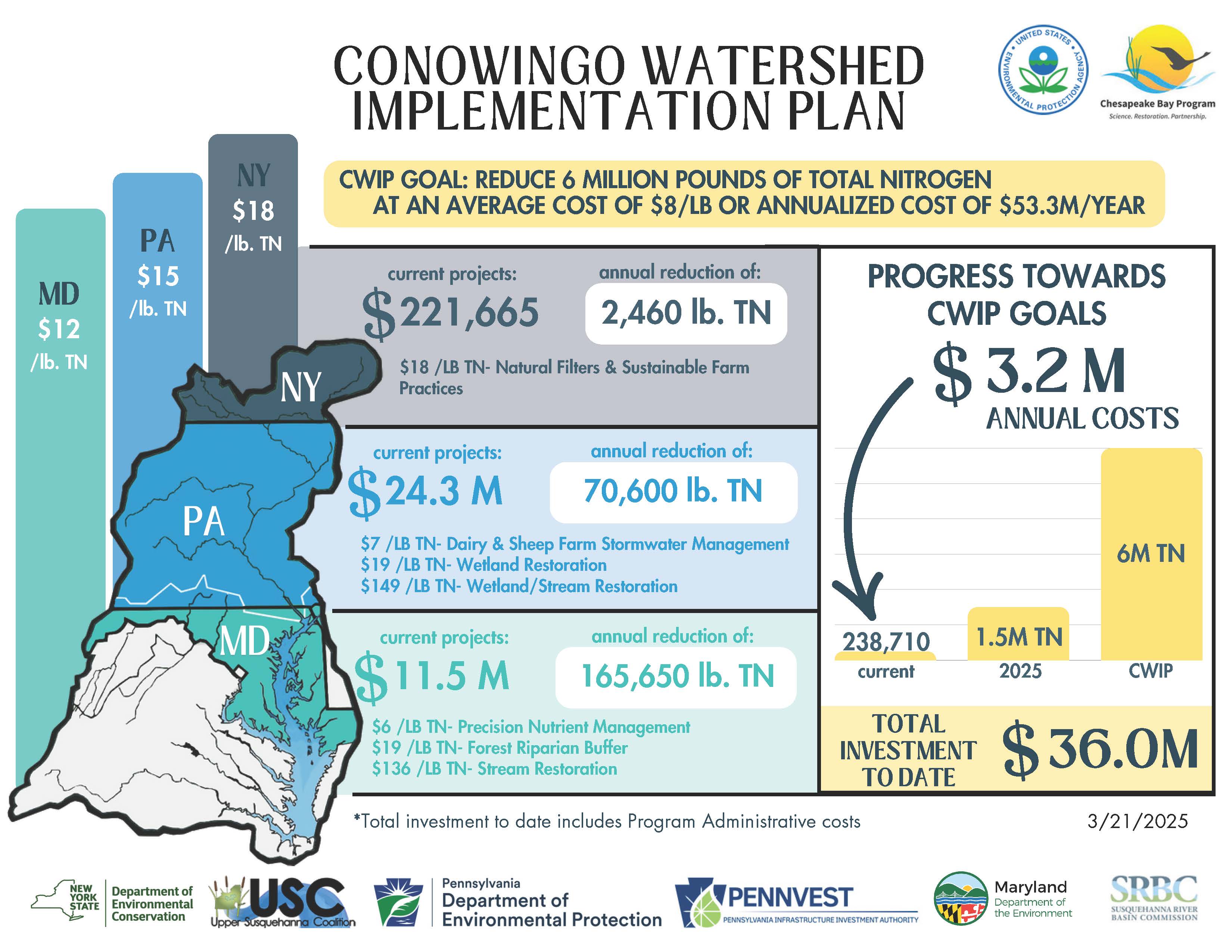Background
In 2017, the U.S. Environmental Protection Agency utilized the latest science and updated modeling tools to measure restoration progress in the Chesapeake Bay. This new science demonstrated that the Conowingo Reservoir had reached its capacity to trap sediment, adding six million pounds of nitrogen and 260,000 pounds of phosphorus pollution and reducing dissolved oxygen concentrations in the Bay.
These additional pollution loads are being addressed through a Conowingo Watershed Implementation Plan (CWIP) that would be achieved by Maryland, Pennsylvania, and New York working together, pooling resources, and reducing costs through implementing nitrogen-effective best management practices in the Susquehanna River Basin. Maryland committed to reducing 180,000 lbs of nitrogen per year to meet CWIP targets.
Two fiscal approaches were established: innovative pay for performance programs in Pennsylvania and Maryland and more traditional technical assistance and grant based approach utilizing partnerships with federal, state, and local organizations.
Maryland’s Pay for Success Program
Maryland allocated $25M to a Pay for Success Program to cost-efficiently achieve nutrient reduction targets established in the CWIP. MDE entered into an agreement with the Susquehanna River Basin Commission (
SRBC) to assist in the review of applications and act as the fiscal agent for awarded contracts.
In round one of the Pay for Success Program, 19 projects totaling more than $90 million were submitted for consideration.
$11.3 million was awarded for seven projects in Maryland and Pennsylvania that represent a diversity of restoration options. Among the projects are riparian forest buffers on land used for livestock grazing and hay production, the conversion of cropland to grassland, agricultural precision nutrient management, and stream restorations. The lifespan of the projects ranges from 1 to 20 years and the per-pound costs of the projects chosen ranged from $6 to $150. It is estimated that approximately 165,600 lbs of total nitrogen will be reduced per year once these projects are completed.
Round two projects are currently under review. It is expected that the remaining funds from the $25M investment will be awarded. Proposals include reducing nutrients applied to farmland, planting riparian forests, improving manure storage, planting cover crops, and restoring streams. Awards are expected to be announced in spring of 2025. Once round two projects are implemented, Maryland is expected to achieve its 180,000 lb/year target.
CWIP implementation is an example of successful interstate collaboration between Maryland, Pennsylvania, and New York to make progress towards meeting the necessary nutrient and sediment reductions resulting from Conowingo Reservoir infill. Each state has implemented strategies to reduce implementation costs. The below graphic depicts current progress.


Contact Information